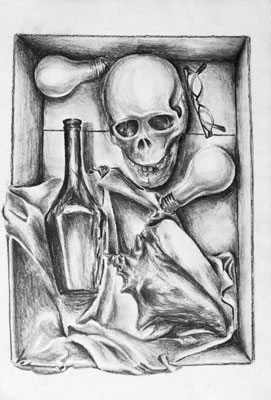All Nonfiction
- Bullying
- Books
- Academic
- Author Interviews
- Celebrity interviews
- College Articles
- College Essays
- Educator of the Year
- Heroes
- Interviews
- Memoir
- Personal Experience
- Sports
- Travel & Culture
All Opinions
- Bullying
- Current Events / Politics
- Discrimination
- Drugs / Alcohol / Smoking
- Entertainment / Celebrities
- Environment
- Love / Relationships
- Movies / Music / TV
- Pop Culture / Trends
- School / College
- Social Issues / Civics
- Spirituality / Religion
- Sports / Hobbies
All Hot Topics
- Bullying
- Community Service
- Environment
- Health
- Letters to the Editor
- Pride & Prejudice
- What Matters
- Back
Summer Guide
- Program Links
- Program Reviews
- Back
College Guide
- College Links
- College Reviews
- College Essays
- College Articles
- Back
The Knights tale, or A Knights Tale
To adapt a piece of art is to take someone’s craft, and alter it or to build off of it to create a new piece of art. Sometimes a adaptation mimics the original work. Other times the resemblance is so slight that it can be considered completely astray from plot and theme.
This is the case in Brian Hegeland’s film, A Knight’s Tale. Hegeland adapted Geoffrey Chaucer’s “The Knight’s Tale,” one of the poems that make up the epic volume The Canterbury Tales. Few of the characters from the epic poem even made it into the movie. The only characters that are noticeably in A Knight’s Tale are Arcita, Palamon, and Emily. These characters are represented as William, Count Adhemar, and Jocelyn. The movie is very entertaining theatrically. Although the movie itself is good, when it is compared to the plot of “The Knight’s Tale,” it deserves a D-. The commonality between the book and the movie are in the theme instead of the plot. Examples of common elements include only the time period during which the story is told and the idea of star-crossed love is common in Chaucer’s poem.
One reason that I grade Hegeland’s A Knight’s Tale with a D- is the relevancy to the plot in “The Knight’s Tale.” Although some common themes appear in the two works of art, for the most part the story is completely different. For example, “The Knight’s Tale” starts with the advancements of a hero named Thesius. In A Knight’s tale there is no epic quest leading into the theme of star-crossed love. Also it is hard to interpret the inclusion of Geoffrey Chaucer, the author of “The Knight’s Tale,” into the movie. This would be like including the character of Shakespeare in A Mid-Summers Night Dream. Because one is a movie and the other is a text, is it very hard to juxtapose these two works. They can be interpreted as the same plot, but there are many subtle changes that differentiate the two works of art.
Someone who is interested in literature should always read the book, play, or poem before seeing a movie based on or adapted from the text. It’s difficult to fulfill the reader’s demands and expectations in motion pictures. If a reader doesn’t want to be disappointed, he or she should skip movie adaptations altogether.

Similar Articles
JOIN THE DISCUSSION
This article has 0 comments.
